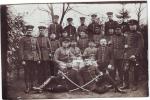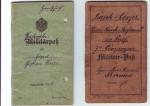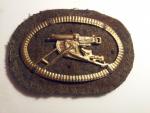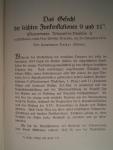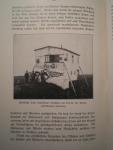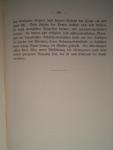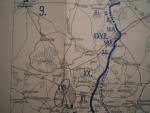-
Posts
3,071 -
Joined
-
Last visited
-
Days Won
5
Content Type
Profiles
Forums
Blogs
Gallery
Events
Store
Everything posted by The Prussian
-

Uniform. Which nationality?
The Prussian replied to The Prussian's topic in The Great War 1914 to 1918
Hi Jonas! That really could fit!!!! Thank you very much for the informative link! The cap badge coud fit too! I´ve also seen those shoulde boards in that link! -

Uniform. Which nationality?
The Prussian replied to The Prussian's topic in The Great War 1914 to 1918
Push-up post... No idea, mates? -
Hello Gentlemen! I bought this famous photograph at ebay, but I haven´t recieved it yet (so I took the photo from ebay - because of that it´s got stil the yellow stripe...). But I can´t wait to ID the nationality. So I post it here. The uniform looks like british, but the patch and the shoulder boards (three rectangles) are unknown to me. The reverse is blank. Maybe Ireland? I´ve read, irish subaltern officers had those bars (1-3) upon the shoulder boards. http://www.uniforminsignia.org/?option=com_insigniasearch&Itemid=53&result=2035 Thanks a lot in advance for your help!
-
Hi Douglas! The only thing I can say, that he is an infantrist (because of his brandenburg cuffs and the spiked helmet). The card says "Munsterlager". That doesn´t help in any way, because Munsterlager was a large training ground, that was used by most of the units in north-west Gemany. Munster is a town 70km south of Hamburg and belonged to the X.army corps. I assume, he doesn´t have a number upon his boards, but maybe a letter. It could be a "P" of the Inf.Rgt.91 from Oldenburg (X.army corps).But that is just a guess
-
I browsed my old Bundeswehr-photo-collection, when I served from 1987-1991. I´ve found a pic of my old "Iltis". What does the "E" at the radiator grille stands for? (it was not official, but we were allowed to fix it) Sorry for the bad quality, but in 1988 we didn´t have digitilized photographs... A pointer: I served with the 1./Pz.Gren.Btl.322 (Armoured infantry)
-
Hello Poulton and Chip! I agree with Chip, that the XVIII.AK didn´t have a Bekleidungsamt. BUT, in 1916 the Bekleidungsämter for the III.bav.AK AND the Reserve-Bekleidungsämter of the XVIII, XX and XXI were founded! The shoulder straps of the "Friedensuniform M1915/16" for Bekleidungsämter were white! (new Kraus, vol. I, plate 21). So here we have a shoulder strap for a soldier or an NCO of the Reserve-Bekleidungsamt XVIII.AK for the Friedensuniform M1915/16
-
Well, Douglas, that´s a card, where "everything fits". I love it. The research made a lot of fun to me. To see, how all pieces fit together! I´ve found the battle-report while looking after informations about the uniforms of the signal-station members. That will be the last question about this photo. But it will be an attached unit of the dragoons. But, why did he subscribe with Otto, when the sender was named with a "D"? Or is the D for Dragoon?
-
There is one thing left, that makes me puzzled. The uniforms. If the sender belongs to the signal-detachement, why do we see dragoons? Well, the dragoons might have been transfered to the signal units for recconn actions. So far, so good. BUT, his first name starts with a "D". (It´s the same letter than the D in "Div"). Why did he subscribe with "Otto"? Could the D stands for "dragoon"? By the way, Lt. Baltzer (who wrote the action-report), served in 1914 in the 5th company (Darmstadt) of Telegraphe-Bataillon 3. After the war he became captain. In 1925 he served with the Nachrichten-Abteilung 3 in Potsdam. There was a colonel Baltzer in the Rangliste of 1939 as a commander of the signal-troop XII in Wiesbaden. That could fit with Darmstadt. Maybe th same Baltzer?
-
And, Douglas, YOU WON´T BELIEVE IT!!!!!!!!! But I´ve found a battle-report of exatly those light signal-stations 9 and 11 about the battle of Witkowice at 24.11.1914!!!!!!! I´ ve found it in the book "Zur Geschichte der Nachrichten-Truppe 1899-1924" Unfortunately I don´t have too much time to translate it, but I think, you´ll find someone for that. If not, let me know, I´ll do it, but it´ll take time. To the uniforms. Normally those signal soldiers might have been worn a shoulder strap with a T and a 3 (for the 3rd Telegraphe-Bataillon, who had set-up thos signal units). But the light signal-stations served with the reccon troops of the division, so some dragoons might have been put under command of the signalists. The light signal stations had 25 soldiers (incl. two officers) and 35 horses, the heavy ones 40 soldiers (incl. two officers) and 45 horses. The range of the light stations was for about 100km and of the heavy ones 250km. Here we go:
-
Another addition to the division: The 6th cav.div. fought in the western theatre until 29.10.1914, then transfered to Russia, where it was dissolved at 14.10.1916. Set up again in Hungary at 20.10.1916, it fought in Rmaniy until 10.2.1917. Then transfered again to France, where it had changed into the 6.Kavallerie-Schützen-Regiment (dismounted)
-
Hi Douglas! Thanks a lot!!! Well, I think, the adress is: Jakob Sitzler, alt (alt=old, maybe grand-parents, if there is a younger man with the same name in the same house) Adelshofen bei der Kirche Amt Eppingen (Amt means post office) http://de.wikipedia.org/wiki/Adelshofen_%28Eppingen%29 There are stil living people with that name http://www.dasoertliche.de/Themen/Sitzler/Eppingen+Adelshofen.html
-
Hello! Addition in formation´s history: The signal-detachement (Nachrichten-Abteilung) of the 6.Kav.Div. consisted of the schwere Funkenstation 4 (heavy signal station) and leichte Funkenstationen 9 and 11 (light signal station) I don´t know the correct english word for Funkenstation, so I improvised... By the way, these guys wear a crowned shoulder strap, so they served with the Leib-Dragoner-Regiment (body-dragoon-regiment) Nr.20 from Baden (that´s where the card is adressed to) The 6th cav.div. (commander Generalleutnant Graf v. Schmettow), in 1914 belonged to the HKK (Higher-Cavalry-Commander) Nr.1 (commander Generalleutnant Frhr. v. Richthofen) with the following units: 28.Kav.Brig. (Leib-Drag.Rgt.20, Drag.Rgt.21) 33.Kav.Brig. (Drag.Rgt.9, Drag.Rgt.13) 45.Kav.Brig. (Hus.Rgt.13, Jäger-Rgt.z.Pf.13 (mounted rifle-regiment) Mounted detachement of the field-artillery-regiment 8 MG-detachement 6 Engeneer detachement Signal detachement (see above) Cavalry-lorry-column 6 Battles. The card was written december, 8 in 1914. By the outbreak of war the 6th division fought in the western theatre (5th army) At automn 1914 they were transfered to the east-front. When the card was written, they fought in the battle near Lodz. That battle lasted from 16.11.-15.12.1914. In that battle they fought in: Witkowice (19.11.) Srock (20.11.) Huta-Szklanna and south of Bendkow (21.11.) Wardzyn-Kurowice (22.-23.11.) Breakthrough of Brzeziny (23.-24.11.) Tadzin and Mroga-sector near Kolacin (25.-26.11.) Trench-battles near Glowno (25.11.-15.12.) The card was writen at Monkovice. Now that village is called Makolice. You can find it ca. 15km north-west of Glowno and ca. 25km north of Lodz. On the attahed map you see the latest marking of the 6th cav.div. You find it in the sector of the XXV. reserve corps. You see, they were exactly north wes of Glowno. Where the 6 is, there might be Monkolice (Makolice) The map is from the book: Der Weltkrieg 1914-1918 (vol. 6)
-
Hello! Most of those manuals were available for the public. Other ones were marked with "Geheim" (secret). The OHL (Falkenhayn) only published one manual in 1916. "Bekämpfung von MG-Nestern" After Verdun a few new manuals came out under Falkenhayn. They were called: Vorschriften für den Stellungskrieg aller Waffen 1. Der Minenkrieg 2. Die Leuchtmittel 3. Stellungsbau 4. Die Nahkampfmittel From fall 1916 until spring 1917 the following were published: 1. Grundsätze für die Führung der Abwehrschlacht im Stellungskampfe 2. Allgemeines über den Stellungsbau 3. Verwendung und Tätigkeit der Artillerieflieger im Stellungskampf 4. Die Minenwerfer 5. Verbindung der Infanterie mit Fliegern und Fesselballonen 6. Einzelheiten über den Stellungsbau 7. Nahkampfmittel During a new collection came out: 1. Sonderheft zum Sammelheft der Vorschriften für den Stellungskrieg, zusammengestellt auf Grund der Erfahrungen bei der Abwehr der englisch-französischen Offensive im Frühjahr 1917 2. Signalordnung 3. Nachrichtenmittel 4. Allgemeines über den Stellungsbau 5. Der Infanterieflieger und der Infanterieballon 6. Verwendung und Einsatz von Schlachtfliegern 7. Weisungen über den Einsatz von Jagdstaffeln 8. Schwerstes Flachfeuer 9. Nachrichtenmittel und deren Verwendung In 1918 came out: 1. Der Angriff im Stellungskrieg Before the battle of France: 1. Der Artillerieflieger und der Artillerieballon 2. Verkehrsordnung für Nachrichtenmittel 3. Verwendung von Schlachtstaffeln Afte the battle of France: 1. Die Minenwerfer 2. Einsatz und Verwendung der Flaktruppe 3. Vorschriften über den Stellungsbau Note: Those manuals were used additionally to the former D.V.E. A new one (normally) deleted the older one
-
Hello! That´s right. I the pre-war time they were called Telegraphentruppen. In july 1917 the Nachrichtenwesen (signal service) were reorganizied. The name Telegraphentruppen was changed into Nachrichtentruppen. Each army, army-corps and division had their own Nachrichten-Kommandeur. In addition the 18th army in march 1918 had the following parts of the Nachrichtenwesen. Armee-Nachrichten-Kommandeur 15 Armee-Fernsprech-Abteilungen 115-118 Fernsprechzug 618 Fernsprech Stationszüge 1131, 1137, 1141, 1142, 1144, 1167, 1175, 1179 Fernsprech-Betriebszüge 1020, 2.1039, b.1040, b.1041, 1045, 1048, 1076 Fernsprech Bauzüge 941, 973, 978, 856, 817 Kraftwagen Fernsprech Bauzüge 963, 964, 966, 980, 981, 993, 1906, 1909, 1914, 1915, b.1916 Blinkerzüge 3, 6, 22, 45, 52, 111, 190, 221, 237, 321, 337, 504, 506, 507, 509, 515 Divisions Funkerabteilung 143 Armee-Nachrichten-Park 15 Armee-Funker-Park 15 Nahrichten-Ersatz-Depot 3 Meldehundestaffel 52 Armee-Funkerabteilung 15 Vermessungs-Abteilung 26




